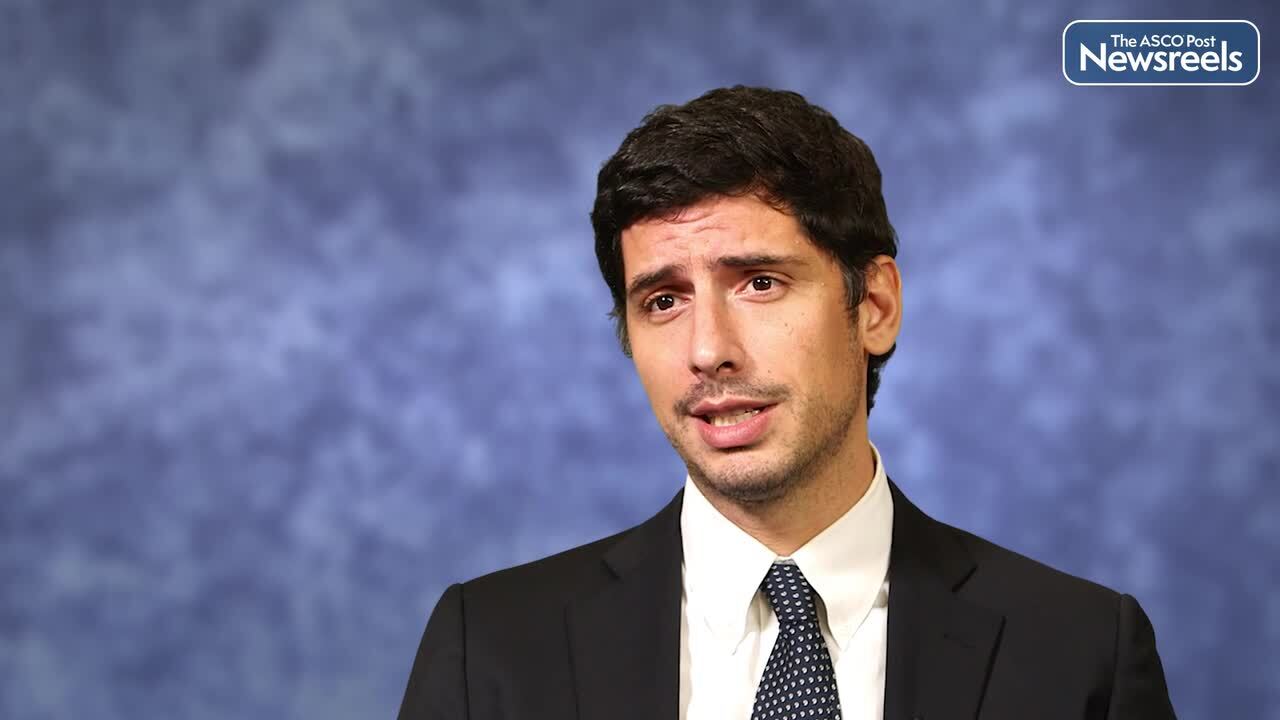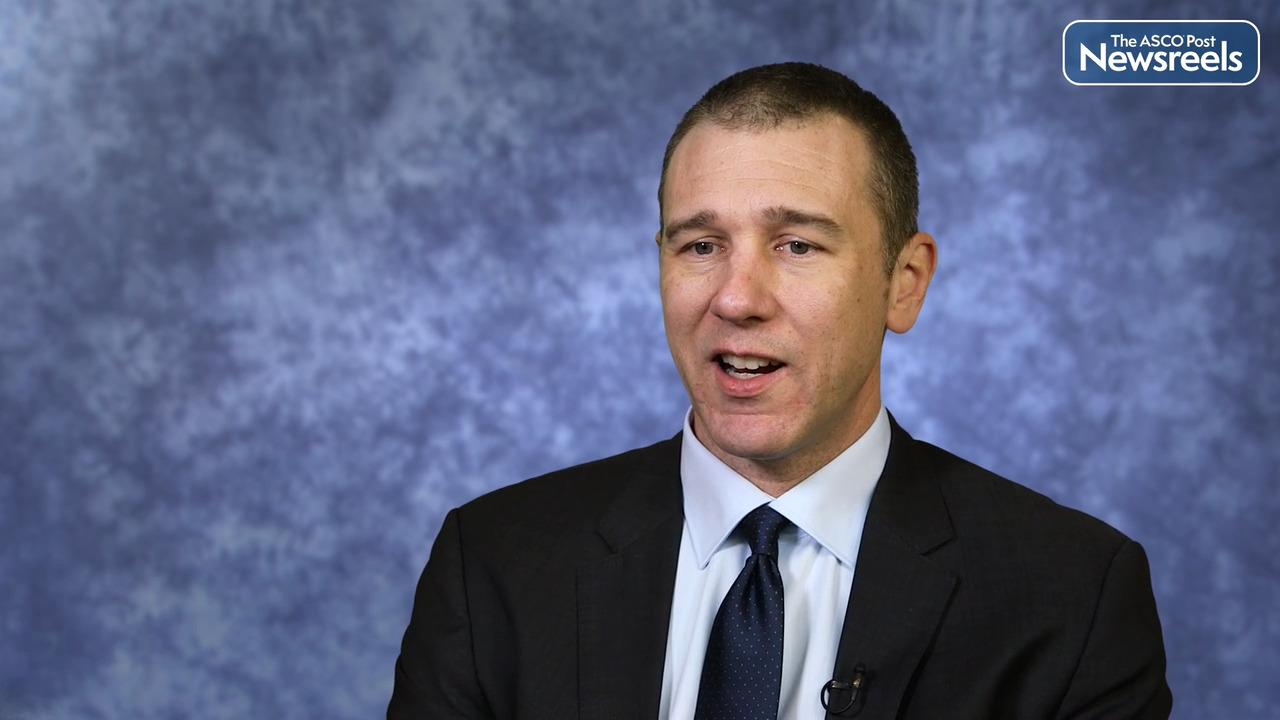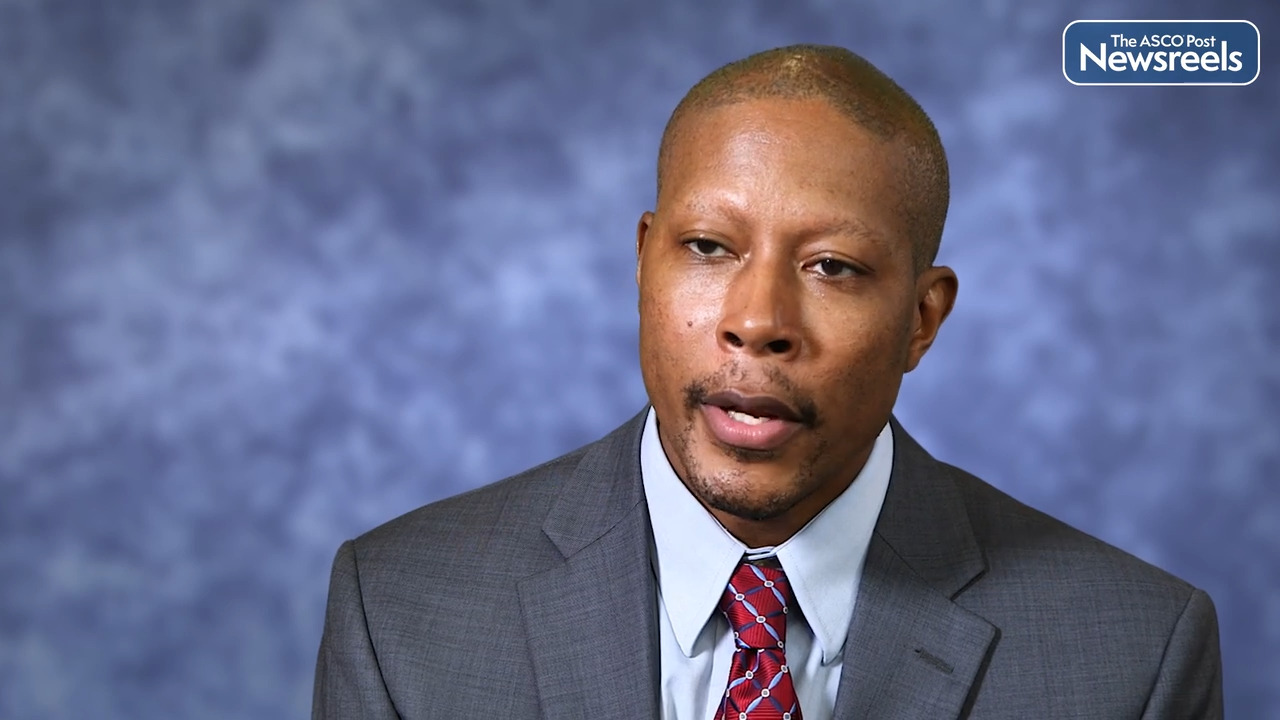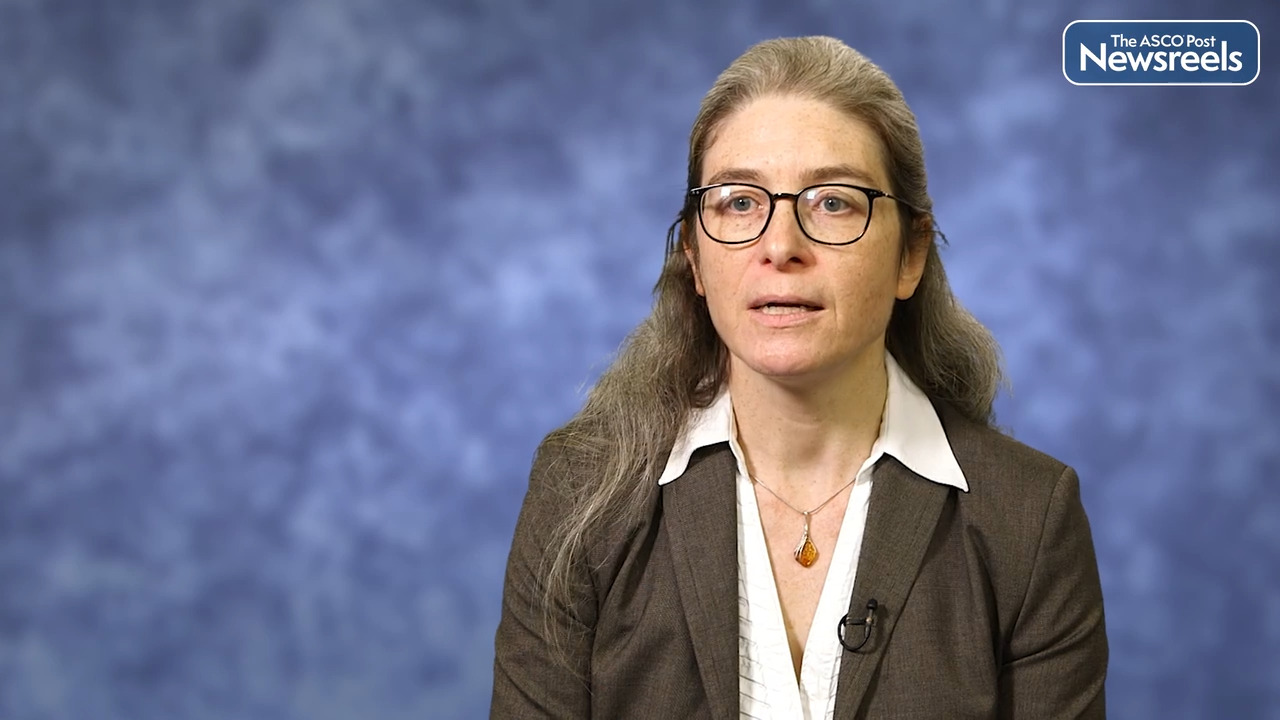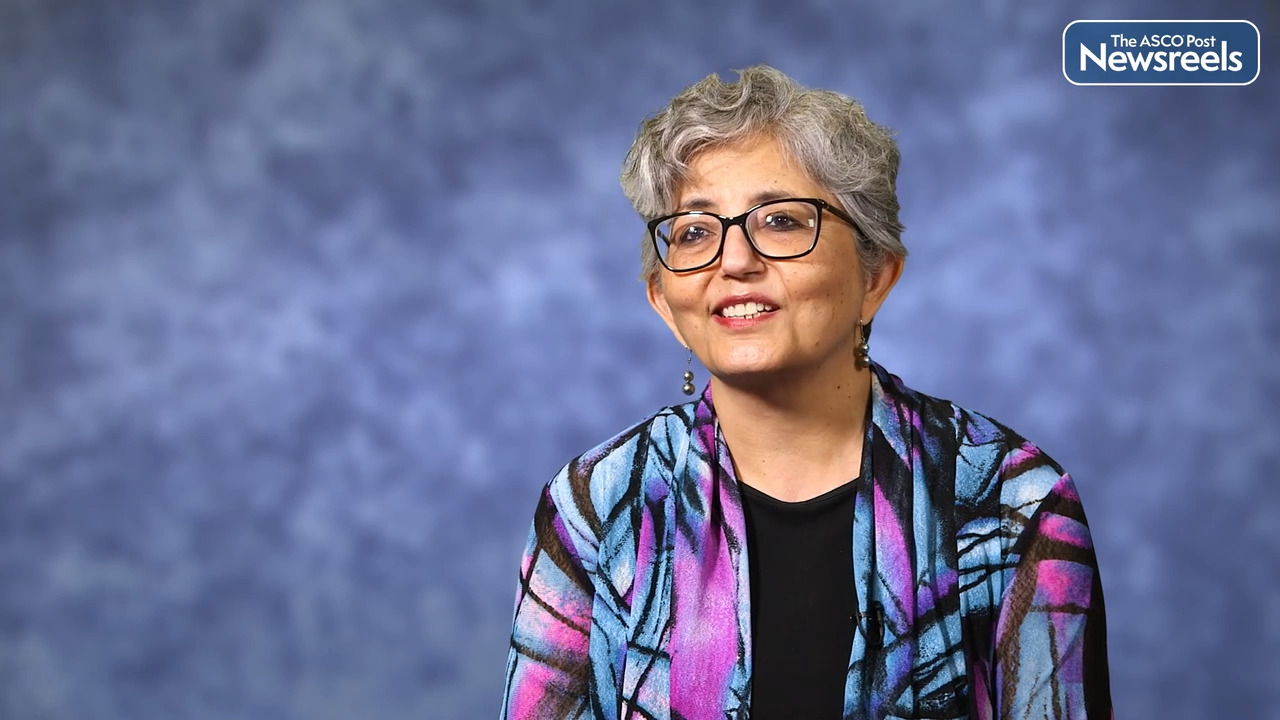Joseph Schroers-Martin, MD, on Posttransplant Lymphoproliferative Disorders: Tumor Microenvironment Determinants of Immunotherapy Response
2022 ASH Annual Meeting and Exposition
Joseph Schroers-Martin, MD, of Stanford University, discusses immunogenomic features reflecting divergent biology in posttransplant lymphoproliferative disorders (PTLD). These include evidence of mismatch repair defects in Epstein-Barr virus–positive PTLD, tumor microenvironment depletion, and MYC pathway enrichment in certain patients (Abstract 72).
Transcript
Disclaimer: This video transcript has not been proofread or edited and may contain errors.
Post-transplant lymphomas are a major complication of solid organ transplantation with a hazard ratio for aggressive lymphoma of up to tenfold as compared to the general population. The major clinical association is with Epstein-Barr Virus or EBV, which in addition to an aggressive lytic phase, is known to maintain various viral gene expression programs known as latency phases associated with different virally associated lymphomas, including post-transplant lymphomas, Hodgkin lymphoma, and Burkitt. So despite the morbidity associated with post-transplant lymphomas, a subset of patients can be cured with reduction of immunosuppression and rituximab alone and such patients are typically treated via risk stratified strategy per the PTLD one randomized trial with an initial trial of rituximab monotherapy followed by chemotherapy if necessary.
However, we don't know in advance which apparent patients will eventually require chemotherapy, and likewise, there's no screening strategy in this patient population. The purpose of our study then was to evaluate whether there may be biomarkers in the tumor micro-environment in terms of immune cell subsets, in terms of viral factors such as viral gene expression or viral polymorphisms or tumor factors such as mutational and copy number burden that would correlate with these clinical factors in chemotherapy requirement.
To start with, we looked at paired tumor DNA and RNA sequencing from a large cohort of PTLD patients. The median age was 44. The median time from transplantation to lymphoma diagnosis was a little over two years, and 69% of these patients were clinically EBV positive. Of note, 38% of patients in the cohort did eventually have a complete response to rituximab and immunosuppression modulation alone. What we found looking at paired DNA and RNA from tumors from these patients was a gradual increase in lymphoma oncogene mutations with distance from transplantation. 11 patients had no detectable driver mutations. These patients were all at a time to diagnosis of less than two years and were also uniformly EBV positive. When we began to evaluate copy number, we saw a similar effect where copy number increased with time from transplantation resulting in a significantly increased burden in both EBV negative patients and patients at a time greater than two years post-transplantation.
In addition to this gradual increase in genomic burden, what we saw was also a different mutational repertoire in PTLDS compared to immunocompetent DLBCL with a decrease in several genes associated with immune invasion, including beta-two microglobulin and TNFRSF14, as well as a decrease in NF-kappaB pathway genes, including MYD88 and PIM1. The thought then is that mechanistically medical immunosuppression may reduce the requirement for tumor immune evasion and likewise, that tumor intrinsic NF-kappaB drive may be replaced by viral proteins including EBV LMP1. When we consider the virus itself, EBV typically in PTLD is thought to have latency one and latency two programs with expression of the EBNA-1 and EBNA-2 genes. What we found amongst EBV positive cases was in fact a diversity of gene expression ranging from some EBV positive cases with little to no viral gene expression to those expressing an almost full lytic program.
These cold cases with lessened viral involvement tended to occur later from transplantation suggesting for a reduced viral role in these cases considering the tumor microenvironment. Likewise, what we saw was that patients eventually requiring chemotherapy had a cold tumor immune microenvironment with increased M0 macrophages regulatory T-cells, as well as an increase in copy number burden. Interestingly, there was no difference in coding mutational burden between patients requiring or not requiring chemotherapy. In terms of clinical implications of this study, we think that this study sheds light on the divergent biology of PTLD occurring immediately post transplantation versus later of EBV positive versus EBV negative disease, but importantly highlights the spectrum of biology within the EBV positive cases. We think that this may aid, first of all, in risk stratifying those patients that may need to proceed directly towards chemotherapy without an immunotherapy trial. But likewise, this evaluation of the tumor microenvironment looking at the colder tumor microenvironment may help assist in pursuing novel immune therapeutics in this high risk patient population.
The ASCO Post Staff
Francesco Maura, MD, of the University of Miami, Sylvester Comprehensive Cancer Center, discusses his team’s findings in which they defined a comprehensive catalogue of genomic determinants of response to DKRd (carfilzomib, lenalidomide, dexamethasone) in newly diagnosed multiple myeloma. The researchers have identified a number of new genomic alterations that explain resistance to the agents currently used in combination regimens (Abstract 470).
The ASCO Post Staff
Paolo F. Caimi, MD, of the Taussig Cancer Institute, Cleveland Clinic, discusses new findings showing that patients with diffuse large B-cell lymphoma (DLBCL) who achieve a complete response after salvage therapy with rituximab, ifosfamide, carboplatin, and etoposide (R-ICE) can achieve long-term disease control, regardless of the time to relapse from initial therapy, particularly if they proceed to autologous stem cell transplant (ASCT). These results suggest that second-line chemotherapy followed by ASCT and/or CAR T-cell therapy for chemosensitive and chemorefractory patients may maximize patient outcomes, regardless of time to relapse (Abstract 156).
The ASCO Post Staff
Tycel J. Phillips, MD, of the City of Hope National Medical Center, discusses data that showed fixed-duration glofitamab monotherapy induced high and durable complete response rates in patients with mantle cell lymphoma (MCL) who received obinutuzumab pretreatment. This is one of the largest data sets and longest follow-ups reported with a CD20/CD3 bispecific monoclonal antibody for patients with relapsed or refractory MCL (Abstract 74).
The ASCO Post Staff
Eva Hoster, PhD, of Munich University, discusses results from the European MCL Elderly Trial, which confirmed the strong efficacy of rituximab maintenance in minimal residual disease (MRD)-negative patients with mantle cell lymphoma (MCL) after induction. Omitting maintenance based on MRD-negativity is thus discouraged. Considering the short time to progression, more effective treatment strategies should be explored in MRD-positive patients to improve long-term prognosis (Abstract 544).
The ASCO Post Staff
Smita Bhatia, MD, MPH, of the Institute for Cancer Outcomes and Survivorship, University of Alabama at Birmingham, discusses study findings that showed key somatic mutations in the peripheral blood stem cell product increases the risk of developing therapy-related myeloid neoplasms (Abstract 119).
